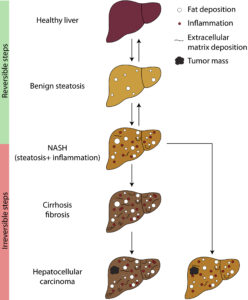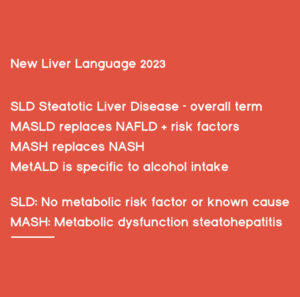Today, your doctor can use a liver biopsy or FibroSure and FibroScan to see how healthy your liver is. A needle biopsy used to be the gold standard to determine the stages of cirrhosis. With newer and less invasive methods to see how sick our liver is, we have more options. I had the good old needle biopsy back in the day. It required fasting, hospitalization, and a recovery period. Let’s look at all sides of measuring your liver health.
2 Minute Read
Liver Biopsy Cons
Too many errors – The liver is the largest organ in your body. You may have fibrosis on one side, and healthy tissue on the other. It’s just not easy to be exact.
Risk of complications – People with cancer or diabetes may not be good candidates. Also older patients, or those who have high blood pressure or other disorders may experience discomfort or difficulties. My platelets were low, causing heavy internal bleeding. It also caused extreme pain and bruising over my stomach, chest, hip, and side.
Cost – It’s costly because it requires an outpatient hospital stay at minimum.
Liver Biopsy Pros
If a patient has more than one condition going on, a biopsy is really useful. That was my case, and even though my experience wasn’t so great, I still say it’s not a problem. I trusted my doctor, and I’m still here.
If you have more than one condition, a biopsy is a valuable tool.
A biopsy is usually required for a patient who is enrolling in a clinical trial.
After a liver transplant a biopsy can be used as a diagnostic tool. For example if there is potential rejection of the donated organ.

FibroScan and FibroSure
A FibroScan test is designed to measuring the liver’s stiffness using elastography, and these tests have been used for several years now. It creates a score, and combined with other liver tests is s great way to diagnosis liver disease.
Both a FibroTest and a Hep Score are done by drawing your blood. Using the results from 6 blood serum tests, the doctor can tell a lot. A fairly accurate stage of fibrosis can be measured. This is especially true if you are in the early stages of liver disease.
We’ve seen more and more doctors using the blood labs of a FibroSure combined with a FibroScan. Then they add the results with the Fibrosure tests. They are often used together to determine how much cirrhosis you have. The doctor will be able to see a fairly complete picture of what the liver looks like.
Downsides of FibroSure and FibroScan
This test cannot be performed if you have swelling due to ascites. It also can’t be done if there is a lot of body fat surrounding the liver.
Upsides of a Fibrosure and FibroScan
With no pain, and taking only minutes to perform the Fibroscan offers a lot of advantages.
Small ultrasound type probe – By using a small roller probe, the technician or doctor will get images that help them measure the stiffness of your liver.
Easy on everyone – It has also been used to determine if you have portal vein hypertension. It’s a great measuring tool pre and post Hepatitis C treatment, while managing Hepatitis B, and also for post transplant patients.
Cost – Because it requires no hospitalization, it’s easy on the pocketbook.
Liver Biopsy or FibroSure and Fibroscan are all great tools for liver disease patients. I was so sure that mine would be a breeze. Well, I was in denial and was totally NOT prepared for the pain. Please don’t be scared. I’ve stayed with my doctors, and ate a liver loving diet. It has all worked out, even with end stage cirrhosis. My best to you in this journey!






